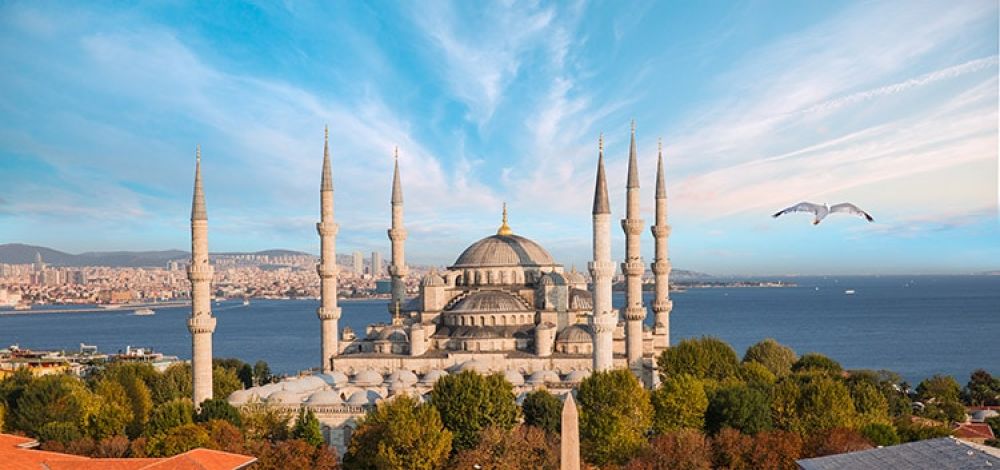The Blue Mosque, also known as the Sultan Ahmed Mosque, is a historic mosque in Istanbul, Turkey. Built between 1609 and 1616 during the rule of Ahmed I, its Külliye contains Ahmed's tomb, a madrasah, and a hospice. Distinctive for its six minarets, the mosque is both an active place of worship and a popular tourist attraction. It's called the 'Blue Mosque' because of the blue tiles surrounding the interior walls. Inside, the high ceiling is lined with the 20,000 handmade ceramic tiles in more than fifty different tulip designs. The mosque incorporates Byzantine Christian architecture of the nearby Hagia Sophia with traditional Islamic architecture and is considered to be the last great mosque of the classical period. The architect, Sedefkâr Mehmed Ağa, synthesized the ideas of his master Sinan, aiming for overwhelming size, majesty, and splendor. Visitors often marvel at the mosque's 260 windows which confer a spacious and majestic impression. Worshipers still attend the mosque, which makes it an essential part of the Muslim community in Istanbul, while tourists are welcomed to visit outside prayer times. Modest dress is required, and entry is free, although donations are appreciated.

